
How to Use TDA2030: Examples, Pinouts, and Specs
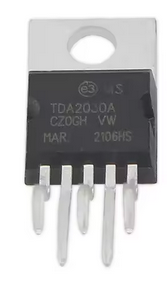
 Design with TDA2030 in Cirkit Designer
Design with TDA2030 in Cirkit DesignerIntroduction
The TDA2030 is a low-frequency class AB audio amplifier integrated circuit (IC) designed for driving speakers in home audio systems. It delivers high output power with minimal distortion, making it ideal for high-fidelity audio applications. The IC is equipped with built-in thermal and overload protection, ensuring reliable operation under various conditions. Its compact design and ease of use make it a popular choice for DIY audio projects, home theater systems, and other audio amplification needs.
Explore Projects Built with TDA2030
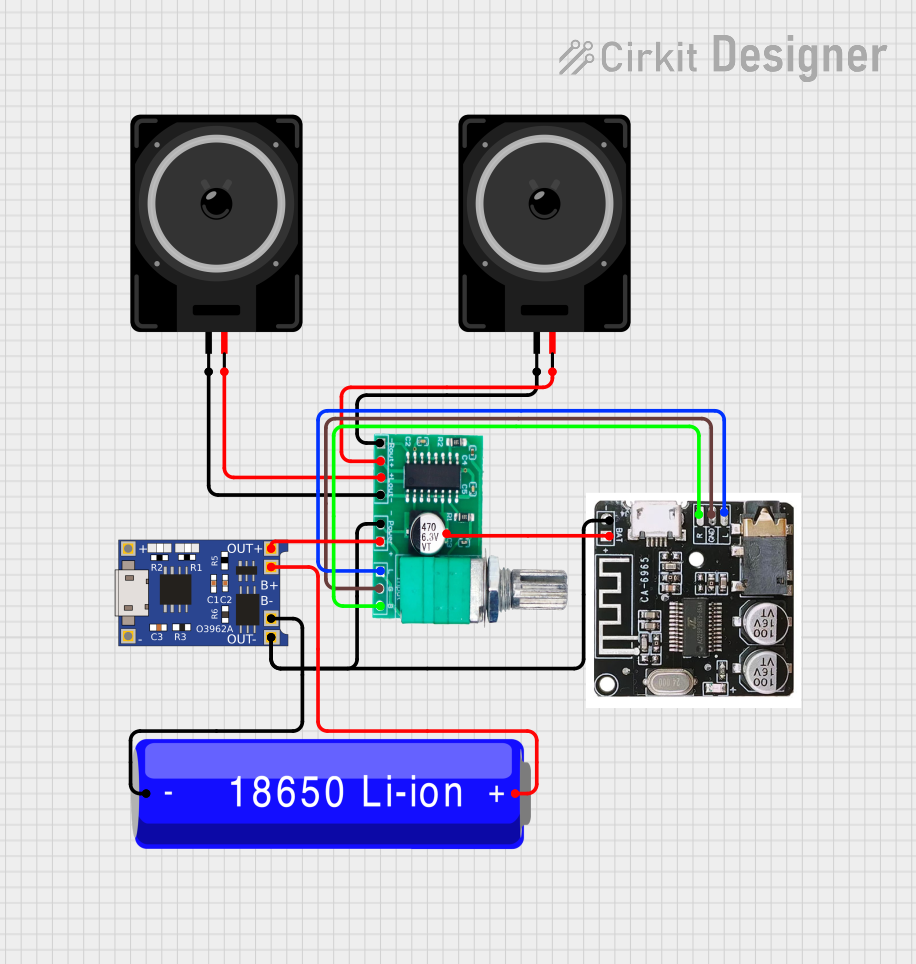
 Open Project in Cirkit Designer
Open Project in Cirkit Designer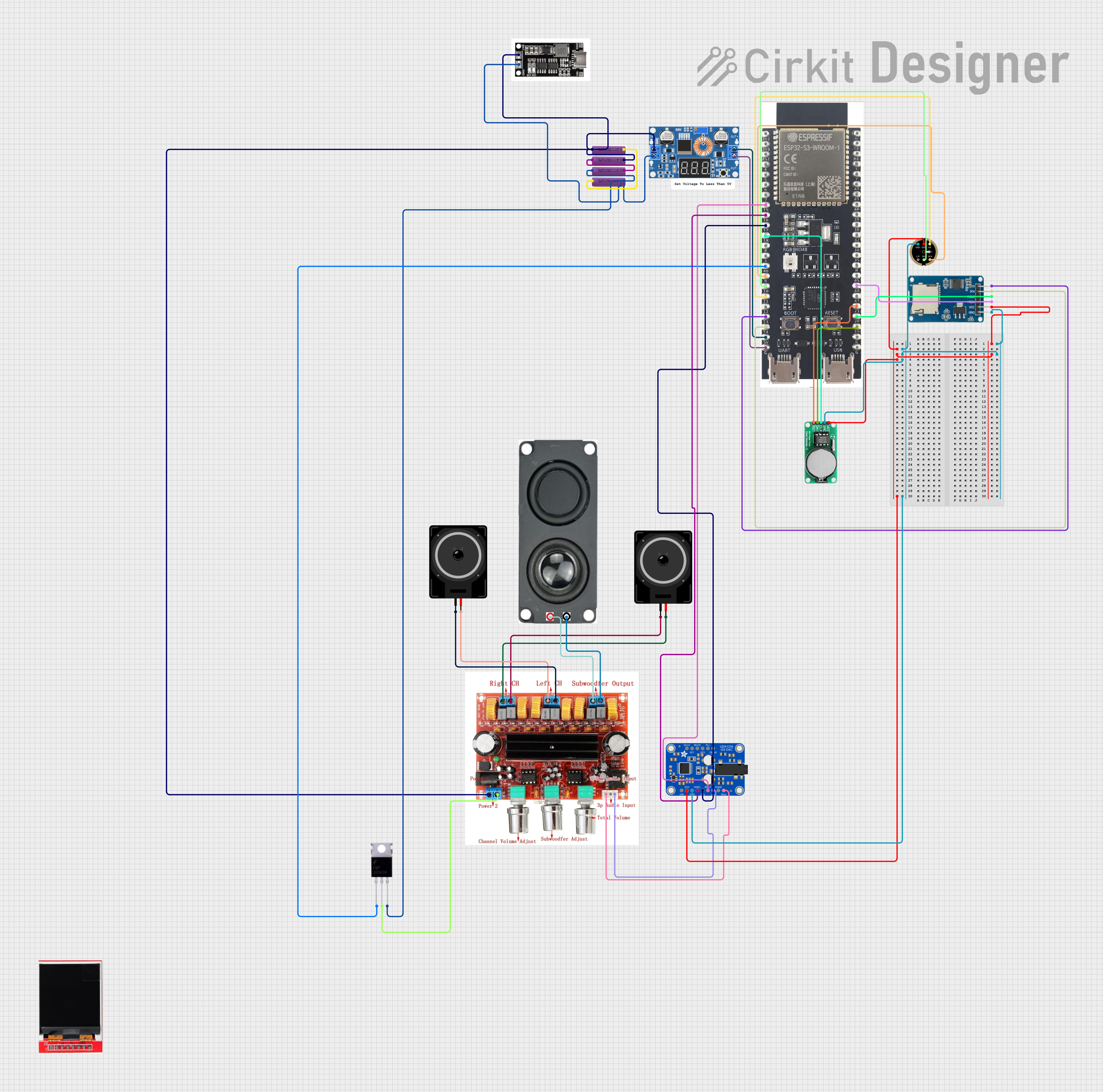
 Open Project in Cirkit Designer
Open Project in Cirkit Designer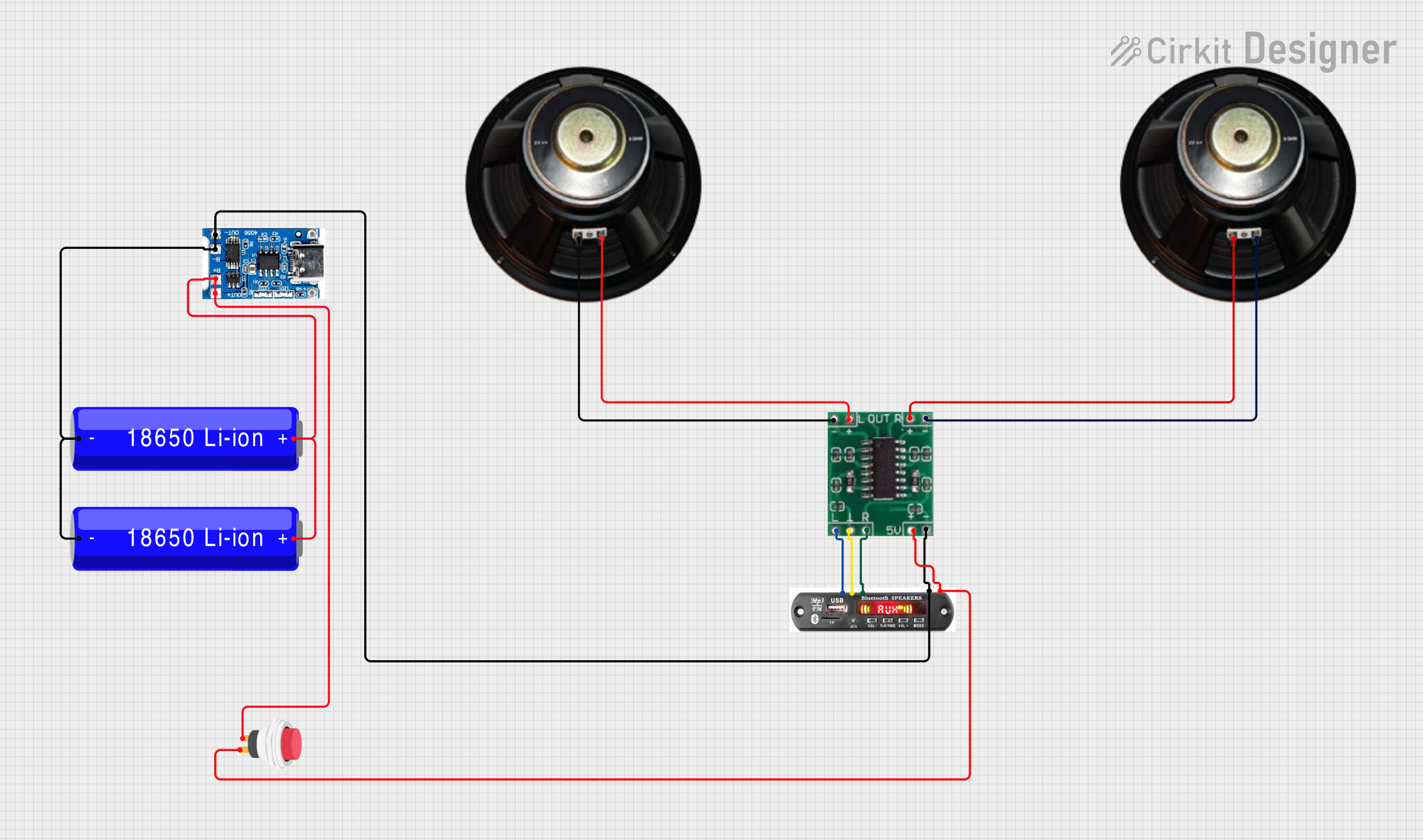
 Open Project in Cirkit Designer
Open Project in Cirkit Designer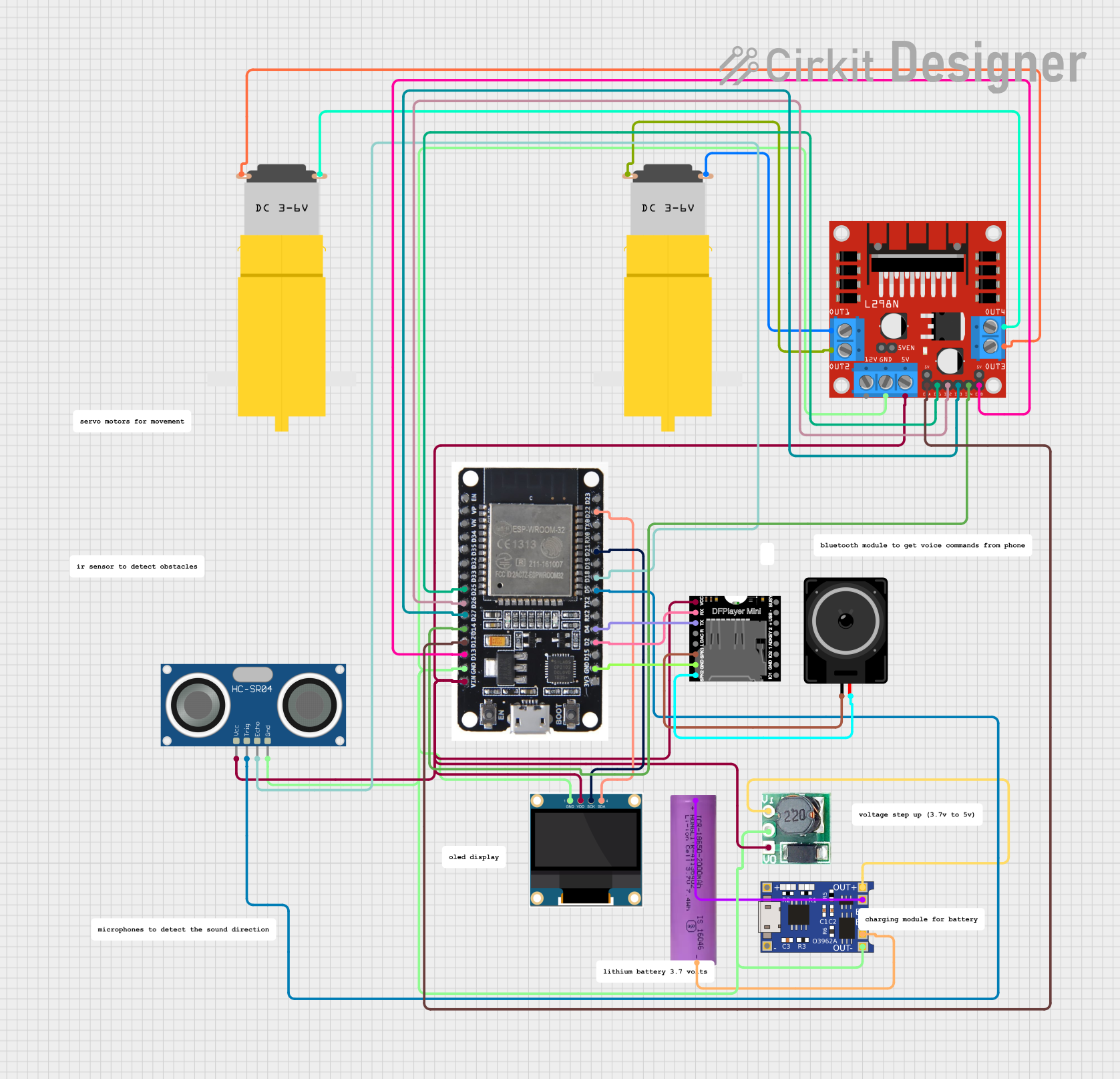
 Open Project in Cirkit Designer
Open Project in Cirkit DesignerExplore Projects Built with TDA2030

 Open Project in Cirkit Designer
Open Project in Cirkit Designer
 Open Project in Cirkit Designer
Open Project in Cirkit Designer
 Open Project in Cirkit Designer
Open Project in Cirkit Designer
 Open Project in Cirkit Designer
Open Project in Cirkit DesignerCommon Applications and Use Cases
- Home audio systems and stereo amplifiers
- DIY audio amplifier projects
- Active speaker systems
- Subwoofer amplifiers
- Audio signal amplification in televisions and radios
Technical Specifications
The TDA2030 is a versatile and robust audio amplifier IC. Below are its key technical specifications:
| Parameter | Value |
|---|---|
| Supply Voltage Range | ±6V to ±18V (dual supply) |
| Maximum Output Power | 14W (at ±14V, 4Ω load, THD = 10%) |
| Total Harmonic Distortion | 0.1% (at 1W, 1kHz) |
| Input Impedance | 150kΩ |
| Gain Bandwidth Product | 3 MHz |
| Slew Rate | 1.5 V/μs |
| Quiescent Current | 40 mA (typical) |
| Thermal Shutdown | Yes |
| Overload Protection | Yes |
Pin Configuration and Descriptions
The TDA2030 is available in a 5-pin TO-220 package. Below is the pinout and description:
| Pin Number | Pin Name | Description |
|---|---|---|
| 1 | Inverting Input (-) | Negative input for the audio signal. |
| 2 | Non-Inverting Input (+) | Positive input for the audio signal. |
| 3 | V- (Negative Supply) | Negative power supply terminal. |
| 4 | Output | Amplified audio signal output. |
| 5 | V+ (Positive Supply) | Positive power supply terminal. |
Usage Instructions
How to Use the TDA2030 in a Circuit
The TDA2030 is typically used in a single-channel (mono) audio amplifier circuit. Below is a step-by-step guide to using the IC:
- Power Supply: Provide a dual power supply (e.g., ±12V) to the V+ and V- pins. Ensure the supply voltage does not exceed the maximum rating of ±18V.
- Input Signal: Connect the audio input signal to the non-inverting input (Pin 2). Use a coupling capacitor (e.g., 1μF) to block DC components in the input signal.
- Feedback Network: Design a feedback network using resistors and capacitors between the output (Pin 4) and the inverting input (Pin 1) to set the desired gain.
- Output Load: Connect the speaker or load to the output pin (Pin 4) through a coupling capacitor (e.g., 2200μF) to block DC components.
- Decoupling Capacitors: Place decoupling capacitors (e.g., 100nF) close to the V+ and V- pins to stabilize the power supply and reduce noise.
- Heatsink: Attach a heatsink to the IC to dissipate heat during operation, especially at high output power levels.
Example Circuit Diagram
Below is a basic example of a TDA2030-based audio amplifier circuit:
+V (e.g., +12V)
|
[C1] 100nF
|
+---- Pin 5 (V+)
|
[R1] 22kΩ
|
Audio Input ----[C2] 1μF---- Pin 2 (+)
|
[R2] 22kΩ
|
Pin 1 (-) ----[R3] 680Ω---- Pin 4 (Output)
|
[C3] 22μF
|
GND
Arduino UNO Example Code
The TDA2030 can be used with an Arduino UNO to amplify audio signals. Below is an example code snippet to generate a simple audio tone:
// Arduino code to generate a 1kHz tone for testing the TDA2030 amplifier
const int audioPin = 9; // PWM pin connected to the TDA2030 input
void setup() {
pinMode(audioPin, OUTPUT); // Set the pin as output
}
void loop() {
// Generate a 1kHz square wave
tone(audioPin, 1000); // Output a 1kHz tone
delay(1000); // Play the tone for 1 second
noTone(audioPin); // Stop the tone
delay(1000); // Wait for 1 second
}
Important Considerations and Best Practices
- Power Supply: Use a regulated power supply to avoid noise and instability.
- Heatsink: Always use a heatsink to prevent overheating, especially at high power levels.
- Speaker Impedance: Ensure the speaker impedance matches the IC's specifications (e.g., 4Ω or 8Ω).
- Grounding: Use a proper grounding scheme to minimize noise and interference.
- Capacitors: Use high-quality capacitors for coupling and decoupling to ensure optimal performance.
Troubleshooting and FAQs
Common Issues and Solutions
No Output Signal:
- Check the power supply connections and ensure the voltage is within the specified range.
- Verify the input signal is present and properly connected.
- Inspect the feedback network for correct resistor and capacitor values.
Distorted Output:
- Ensure the speaker impedance matches the IC's specifications.
- Check for proper grounding to avoid noise and interference.
- Verify the power supply is stable and free from ripple.
Overheating:
- Attach a heatsink to the IC to dissipate heat effectively.
- Ensure the load impedance is not too low, as this can cause excessive current draw.
Humming or Noise:
- Use decoupling capacitors close to the power supply pins.
- Check for proper grounding and avoid ground loops.
FAQs
Q1: Can the TDA2030 be used with a single power supply?
A1: Yes, the TDA2030 can be configured to work with a single power supply. However, additional components (e.g., a voltage divider) are required to create a virtual ground.
Q2: What is the maximum output power of the TDA2030?
A2: The TDA2030 can deliver up to 14W of output power with a ±14V supply and a 4Ω load.
Q3: Can I use the TDA2030 for stereo applications?
A3: Yes, you can use two TDA2030 ICs to build a stereo amplifier, with each IC driving one channel.
Q4: What type of heatsink should I use?
A4: Use a heatsink with a thermal resistance of less than 4°C/W for optimal performance.
By following this documentation, you can effectively use the TDA2030 in your audio amplification projects.